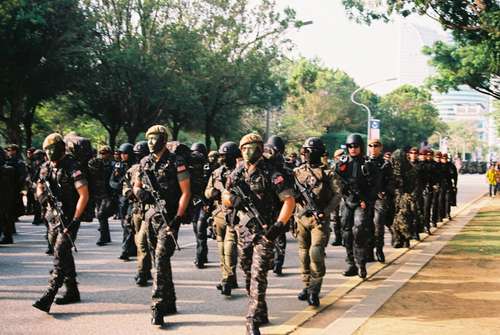South Korea's southern area has been battered by the strongest storm to hit the country in years, which dumped a meter of rain, destroyed roads, and left 66,000 homes without electricity.
Before making landfall close to the port city of Busan on the mainland and blowing into the sea between the Korean Peninsula and Japan with winds of up to 133 kph, typhoon Hinnamnor just missed the tourist destination island of Jeju.
It was headed northeast and was expected to have an impact on eastern China later this week.
Just weeks after severe rains triggered flooding in the nation's capital Seoul that killed at least 14 people, South Korean officials issued an alert to the country about potential damage from flooding, landslides, and tidal waves unleashed by Hinnamnor.
Prime Minister Han Duk-soo called for evacuations in areas vulnerable to flooding, saying Hinnamnor could end up being a "historically strong typhoon that we never experienced before".
The storm has dumped more than 105 centimeters of rain in central Jeju since Sunday, where winds peaked at 155 kph.
Southern and eastern mainland regions were also lashed with heavy rain, which knocked off signboards and roofing, toppled trees and electricity poles and turned roads into rivers.
In Pohang, a woman in her 70s died after being swept away in flash floods, while another woman in her 60s was found dead in a submerged basement parking lot where searches were ongoing for seven people.
A woman in her 80s passed away in the nearby city of Gyeongju after her house was buried in a landslide.
The Ministry of the Interior and Safety reported that a 25-year-old man who had fallen into a creek that had been swelled by rain in Ulsan, another southern city, was missing.
At a sizable steel facility run by POSCO in Pohang, fires were reported, though it wasn't immediately apparent if the storm was to blame.
Of the 3,400 persons who were required to leave, the Safety Ministry reported that as of Tuesday afternoon, 500 had gone home.
More than 600 schools were shut down or switched to online instruction.
More than 66,000 fishing boats were evacuated to ports, and more than 250 aircraft and 70 ferry services were cancelled.
Of the 66,341 families without power on Tuesday, 30,006 had their electricity restored.
The cause of the fires at POSCO's Pohang plant is being looked into, according to a South Korean presidential official who spoke at a background briefing on the condition of anonymity.
State-run media in North Korea announced "all-out measures" to reduce floods and landslide damage.
The Korean Central News Agency reported leader Kim Jong Un had issued unspecified "detailed tasks" to improve the country's disaster response capacity, but it didn't elaborate on the plans.
North Korea sustained serious damage from heavy rains and floods in 2020 that destroyed buildings, roads and crops, shocking the country's already-crippled economy.




